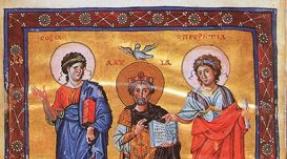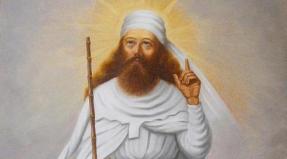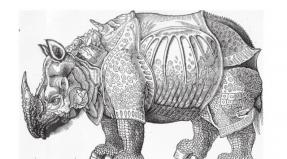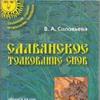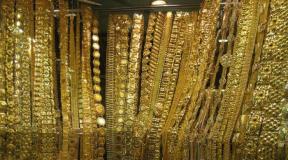Who copes Christmas on January 7th. Orthodox Christmas: Traditions and History Celebration
Nativity - one of the most important Christian holidays. On this day, everyone is grateful to remember that 2000 years ago, God sent to us to our original son, Jesus Christ, giving hope for the salvation of the human race. Christmas is celebrated in Catholic and Protestant countries on December 25 grigorian calendar. In Russia, the Orthodox Church celebrates Christmas too December 25, but by old style. by Julian calendar What corresponds to January 7 for a new style. At the first universal cathedral in Nahei, the calculation of the date of Easter was proposed. According to the bishops, all Christians should celebrate Easter on one day - on the first Sunday day after the full moon from the day of the spring equinox. This Easter calculation system was called Alexandria Easter. After time, the date of Easter ceased to comply with the adopted settlement rule. As it turned out, the problem was that the equinox day was taken from the calendar, and not from observations. In that, 325, the equinox was coming on March 21, and the error in the Julian calendar shifted the equinox day every 128 years a day ago, and by 1582 the difference was ten days. It turned out that the rule "First Sunday Day after Full Moon from the Day of Spring Equinox" is violated. To get away from this problem and maintain the wording of the rule, the Gregorian calendar was introduced, whose task was to preserve the minimum difference between the Spring Equinoxy and March 21. On the one hand, the problem was solved, but on the other hand, the mistake went to the very essence of Easter - in determining the date of Easter actually. Orthodox tradition, while maintaining the true calculation of the date of Easter, unlike the Catholic Church, did not move to the Gregorian calendar and all the calculations of Orthodox events leads through the Julian calendar. Therefore, for example, the Christmas of Christ on calendar calculus - December 25, and it corresponds to the date on January 7 according to the modern calendar - and it is necessary to celebrate the Orthodox christmas on January 7. Julian and Gregorian calendars in the second century with the adoption of Christianity in the ancient Rus came by the summer, used by the Romans, Julian calendar, Roman names of months and seven-day week. Julian calendar was also introduced by Julia Caesar in the Roman Republic in 46 BC. e. Developed this calendar, the famous Alexandria mathematician was cooled with a group of Alexandrian astronomers. Julian calendar turned out to be very simple and fairly accurate. After the death of Julia Caesar in his honor was named the seventh month of the year - July. The last change in the calendar was made by Emperor August, renaming the eighth month in August. So that in August was as many days as in July (month of Caesar), he added one day to him - thirty-first day, seizing it from February. So February became the shortest month of the year. The year for the Julian calendar begins on January 1, since it was on this day from 153 to n. e. Roman consuls took office. In Julian calendar, an ordinary year consists of 365 days and is divided by 12 months. Once every 4 years is announced a leap year, in which one day is added - February 29. It was agreed to call the leaps of those whose numbers are divided by 4 without a residue. Thus, the Julian year has a duration of an average of 365.25 days. The second "Great" reform of the calendar occurred in the XVI century, and it was due to the fact that the difference between Julian and sunny year is 11 min.14 s.; In this regard, the Julian calendar lagged behind nature, and over time, the day of the spring equinox (from which, by decision of the Nicene Cathedral of 325, was counted the day of the Easter celebration and which was "tightly" enshrined in March 21) pointed out all the earliest numbers of the calendar . By the end of the XVI century. This date "ranging" forward for 10 days. It extremely difficult to calculate Easter. And Pope Gregory XIII is decided to reform. According to reform, the date of the spring equinox is directly returned to the 21st March. In Catholic countries, the Julian calendar of Pope Gregory XIII was replaced by the Gregorian calendar in 1582: the next day after October 4th it was October 15. Protestant countries refused to the Julian calendar gradually, throughout the XVII-XVIII centuries (the latest were the UK since 1752 and Sweden). First, the new calendar immediately at the time of adoption has shifted on 10 days the current date due to accumulated errors. Secondly, it became a new, more accurate rule about leap year. Year of a leap, that is, it contains 366 days, if: 1) its number without a residue is divided into 4 and is not divided into 100 or 2) its number is divided without a balance at 400. Thus, over time, Julian and Gregorian calendars disagree more and more: For 1 day in a century, if the number of the previous century is not divided into 4. In the 18th century, the Julian calendar lagged behind Gregoryan for 11 days, in the nineteenth century - for 12 days, in the twentieth century - at 13. In the twentieth century, this difference in 13 days Save. After all, 2000, the first two digits of which are more than 4, carries the next century an overseas day. There will be no such an extra day in 2100: its first two digits are not divided into 4, and therefore he is not a leap. So in the XXII century, Julian and Grigorian calendars already disperse for 14 days. In Russia, the Grigorian calendar was introduced by the Bolshevik government on January 24, 1918. Because of this, the New Year began to celebrate earlier than the Christmas of Christ. The introduction of a new calendar led to the emergence of a holiday called "Old New Year".
The first 330 years in the history of the Christian faith due to its persecution Nativity did not celebrate. And only in the IV century, the Roman emperor Konstantin Great was allowed by Christians openly confess their faith and build church of Christmas. Sincere time, this day began to be honored as a great event. However, since the XVI century, the whole Christian world was divided and noted this holiday at different times. Catholics - December 25, and Orthodox - January 7.
In Russia, Christmas began to celebrate after the introduction of Christianity - in the second century, and since those times this holiday began on the night of December 25th. But with a change in the Yuliansky calendar, the date of the celebration was changed to Gregorian. It is known that the modern calendar, called the Gregorian (new style), introduced Pope Grigory XIII in 1582, replacing the Julian calendar (old style), applied from 45 centuries to our era.

In this regard, it turned out that part of the Christian world, which included not only the Russian, but also Georgian, Jerusalem and Serbian Orthodox church, as well as the Ukrainian Greek Catholic Church also celebrates this day on December 25, but still in old style - Julian.
The change of Julian calendar in the XVI century was initially touched by Catholic countries, later - Protestant. In Russia, the Gregorian Soulship was introduced after the 1917 revolution, namely - February 14, 1918. However, the Russian Orthodox Church, retaining tradition, continues to live and celebrate Christian holidays in the Julian calendar.
Development of the iconography of the Nativity of Christ
Human desire to portray the main events of their life takes their origins from primitive tribes. Therefore, such an event as the birth of the Savior was an important milestone in the life of people. In the first Christian images of Christmas, Christmas looked in the usual drawing, where they portrayed Nursery with a baby and tendered over him by the Virgin, as well as righteous Joseph and Angels, shepherds and Magi, donkey and oxa or cow.
The oldest archaeological artifacts found in Christian sarcophagas, in the form of the first iconography on silver ampoules, which poured oil consecrated in Palestine, are that confirmation. And since the VI century, the same iconography of the Nativity of Christ has already been formed, which will remain until the XXI century.
The Byzantine Iconography of the Nativity of Christ includes three plan: the top is "the sky", the center is "the connection of the sky and the earth", and the bottom - the "Earth". Old Russian Iconography, many centuries following the Byzantine tradition, and in the XVII century borrowed a manner of Western European painting.

The meaning of some characters in the iconography of the Nativity of Christ

Against the background of the sky, a bright Bethlehem star in the form of a ball flash concerning the peak of a mountain with a cave symbolize the expression: "Christmas is the sky on earth." Since Christ's birth, the sky became an open person, meaning that the path to the sky is open and in this way you can get closer to God, thanks to the desire of a human soul up to the top.
Often in iconography use images of the will and donkey are images of two worlds - Israeli and pagan, to save which the Lord came to the world.

The shape of the nurse, resembling the shape of the coffin as symbolic: "Christ was born into the world to die for him and resurrect for him." The shepherds and pagans of Magi also have their own role in the iconography, through which the Most High appeared to the world: "From now on, every person can find his way to God."

Christmas of Christ on the canvases of old masters
The theme of the Nativity of Christ, with its relevance, could not affect the works of artists of various Christian countries. Especially rich in religious plots about the birth of the Savior Western European painting.
Philippino Lippi was one of the first Italian artists who used the landscape in the iconography of Christmas. Madonna with the angels flying from heaven worship the newborn the Savior in the meadow, covered with flowers, which fenced the hedge and symbolizes Paradise.


Italian Paolo Veronese using the biblical plot, depicted a magnificent and luxurious atmosphere, where we see expensive fabrics, feathers, drape, elements of ancient architecture. All canvas is saturated with the solemnity of the iconic event.

Bartolome Murilo The sacrament of the birth of a small Jesus portrayed in the form of genre scene, where
in contrasts of light and shadow, the shepherds are worshiping. According to the pushing of theologians, these ordinary people will become spiritual shepherds and the first evangelists.

A bright light coming from a baby who illuminates Madonna and Angels, enhances the feeling of his divinity. And singing angels, holding a sheet with notes, betray the canvas Yana Calcar solemnity.



Currently, against the background of the spiritual degradation of some countries, Russia wakes up from the lethargic sleeping challenge. In the temples are becoming more and more people. In fact, with each temple there is a Sunday school, a lot of orthodox literature is produced, there are sites, there is even remote training. But sometimes there are a lot of questions about people who recently come to the temple, and where to find the correct answer among a colossal flow of information - not always clear.
Practice shows that people who have come to the temple concerned about the question: why virtually all Europe celebrates Christmas on December 25, and we are January 7, and the new year falls on the post?
In order to answer this question, it is necessary to understand in contractions between Julian, Gregory and Novyulian calendars. Therefore, let's start from the very beginning and answer the question, using the following plan:
1. Date of christmas Christ.
2. First Universal Cathedral and Easter Date.
3. Introduction of the Gregorian calendar.
4. Russian traditions.
So, try to figure out:
1. Each mother, remembers the day, and the hour of birth of every child. About this day of Mother of God, naturally, told the Apostles - this is December 25th. Lord Jesus Christ was born when the Julian calendar was developed on Earth, developed by a group of Alexandrian astronomers and introduced by Julia Caesar from January 1, 45 to the Nativity of Christ.
If we talk about written sources, then on December 25, as the day of the "birth of Christ in Bethlehem Juda", the Roman chronograph of 354, based on the calendar, as long as 336, mentions.
2. The most important holiday in Christianity is Easter and on the first universal cathedral in 325, held in Naja, the calculation of the date of Easter was proposed. All Christians should celebrate Easter on one day - on the first Sunday day after the full moon from the day of the Spring Equinox. Thus, Easter Christ is not performed in one day or before Easter Judaian.
After time, the date of Easter ceased to comply with the adopted settlement rule. The problem was that the equinox day was taken from the calendar, and not from observations. An error in the Julian calendar shifted the equinox day every 128 years old one day ago, and by 1582 the difference was ten days. It turned out that the rule "First Sunday Day after Full Moon from the Day of Spring Equinox" is violated. To get away from this problem and maintain the wording of the rule, the Gregory Calendar was introduced, whose task was to preserve the minimum difference between the natural (astronomical) spring equinox and the calendar coming on March 21.
3. So, in 1582, the Pope Grigory XIII was introduced by a new, "Gregory" calendar, who received the definition of "new style", and the old, Julian calendar, began to call the "old style". On the one hand, the problem was solved, but on the other - the error went to the very essence of Easter - in determining the date of Easter. Orthodox tradition, while maintaining the true calculation of the date of Easter, unlike the Catholic Church, did not move to the Gregorian calendar and all the calculations of Orthodox events leads through the Julian calendar. Therefore, for example, the Christmas of Christ on calendar calculus - December 25, and it corresponds to the date on January 7 at the modern (Gregorian) calendar.
The difference between the new and old style every one hundred and more years is increased by 1 day and in the 21st century is 13 days, and in 2100 there will be a difference for 14 days, that is, on December 25 (Julian calendar) will correspond on January 8 (Gregorian).
4. While a new Gregorian calendar appeared in Europe, Russia continued to use Julian. When in 1918 the new government in the Soviet Union introduced the Gregorian calendar, the church of such a decision was not approved.
In 1923, at the initiative of Constantinople Patriarch, a meeting of the Orthodox Churches was held, at which the decision was made to correct the Julian calendar - thus, a "Novoyulian" calendar appeared. The Russian Orthodox Church, due to historical circumstances, could not participate in it.
On the night of January 6, January 7, the Nativity Day of Christ is celebrated Ukrainian, Georgian, Russian, Jerusalem and Serbian Orthodox Church, Afonov monasteries living in the Old, Julian calendar, as well as many Catholics of the Eastern Rite (in particular, the Ukrainian Greek Catholic Church) and Part of the Russian Protestants. From June 15, 2014, the Polish Orthodox Church passed on the Julian calendar.
All other 11 local Orthodox churches of the world celebrate Christmas, as well as Catholics, on the night of December 24-24, as they do not use the Catholic Gregorian calendar, and the so-called Novyuliansky, which still coincides with the Gregorian.
The discrepancy between the Gregorian and Novoylyan calendars is accumulated by 2800 (the discrepancy of the Julian calendar with the Astronomical Year to 1 day accumulates in 128 years old, Gregorian - for 3.333 years old, and Novyulian - 40,000).
Summarizing, we emphasize that the Lord Jesus Christ was born when the Julian calendar was on Earth, December 25, "Old Style". Orthodox no January 7 is celebrated. When a secular calendar (Gregorian) on the "New Style" shows the date on January 7 in the liturgical books costs the date on December 25, we celebrate it in the Julian calendar.
Congratulations to all with the upcoming holiday of the Nativity of Christ!
In the meantime, a favorable christmas post!
But why then in Russia Christmas is celebrated after the new year while foreigners celebrate it on December 25?
The difference in the difference of the calendars, according to which European and Russia churches live. According to the "old style", that is, according to the Julian calendar, developed by Alexandrian astronomers and the introduced Julia Caesar on January 1, 45, is considered to be December 25. The Julian calendar, however, was imperfect, and allowed a rather significant error. By 1582, this error in relation to the actual astronomical time was + 10 days, and continued to grow. Then, by decision of the Roman Pope, Grigory XIII many countries moved to a new calendar, who subsequently obtained the name of the Gregorian. This calendar has leveled all the errors at their disposal.
In Rome on the "New Style" began to live from October 1582: for October 4, it was immediately 15, and after that he went a more accurate countdown. A little later, other Western countries moved to the Gregorian calendar.
In Russia, however, did not accept the "new style" and continued to conduct the calculations of all Orthodox events in the Julian calendar. The Grigorian calendar "came" to our country only in 1918 - he introduced it. True, the church, separated by the moment from the state, did not approve this decision and continued to adhere to the Julian response. This explains the fact that Christmas, which, according to old style, falls on December 25, corresponds to, in modern summer, January 7th. That is, in fact, the church celebrates the birthday of Jesus Christ is not January 7, but on December 25, but only in the Julian calendar.
Together with the Russians, the Christmas, the Ukrainian, Georgian, Russian, Jerusalem and Serbian Orthodox Church, the Afonov monasteries living on the old, Julian calendar, and many Eastern rites (for example, the Ukrainian Greek Catholic Church) celebrate on the night of January 6 January. As well as some Russian Protestants.
From June 15, 2014, the Polish Orthodox Church switched to the old style.
The remaining 11 local Orthodox churches of the world celebrate the birthday of Christ, like Catholics, on the night of December 24-25, since they adhere to the Novyulian calendar adopted in 1923 at the meeting of the Orthodox Churches (it appeared by making changes to the Julian calendar). Now the Novojulian calendar coincides with the Gregorian.
Leaders have repeatedly raised the question of moving, finally, to the Gregorian calendar, however, due to the fact that it fails to have a unanimous opinion on this occasion, nothing changes. The topic is open.
By the way
The difference between the Julian and Gregorian calendars across every hundred and small years increases for one day, and in the current century will be 13 days. In 2100, the distinction in the "shoot" to 14 days, and, thus, on December 25, the Julian calendar will be held on January 8 at the Gregorian calendar.
The difference between the Gregorian and Novoylyan calendars is accumulated by 2800 (the discrepancy of the Julian calendar with the Astronomical Year to 1 day accumulates in 128 years old, Gregoryan - for 3.333 years old, and Novyulian - over 40,000 years).
If the name of this blog read a person from America or Western Europe, he would be surprised: what is the other way? Do people celebrate Christmas to other dates? But it turns out that so, and I personally know a couple of such :).
Today there are many differences about when and how to celebrate this holiday, and the people even roam such terms as Catholic Christmas and Orthodox Christmas.
Let's figure out what to look a little in history.
The fact is that all this fuss with different dates of the celebration of Christmas - due to different calendars, according to which calculus is underway.
The most used calendar over the centuries in Western Europe was the Julian calendar, who was introduced by Julia Caesar in 46 to the Nativity of Christ. This calendar had 365 days a year and once every four years was added another day. The calendar began on Monday, and every seventh day was considered a holiday. The accuracy of the Julian calendar compared to the tropical year was not large: one extra day was accumulated every 128 years. For example, Christmas, which always coincided with the winter solstice, began to move toward the spring. The same thing happened with Easter.
In many temples, on the plan of the creators, on the day of the spring equinox, the rays of the sun should have been in a certain place. For example, in the Cathedral of St. Peter in Rome is a mosaic. But over time, not only astronomers, but also the clergy, headed by the Pope, could make sure that Easter shifts and no longer falls into the previous place. After a long discussion of this problem, Papa Grigory XIII issued a decree to go to a new calendar (which was named after it). The Grigorian calendar was distinguished by the fact that he had a new rule on the calculus of the leap year.
By order of Pope Gregory XIII 4 October 1582 was announced on October 15 of the same year. The new Gregorian calendar has shifted the current date for 10 days and immediately fixed all the accumulated errors. (Today, the difference between the two calendars is already 13 days, and after a couple of centuries, Christmas would generally shifted to spring).
Therefore, in 1582, Italy, France, Portugal, part of Ukraine and Belarus (the land that were compared to the Commonwealth) switched to a new Grigorian calendar. After that, all Protestant countries of Northern Europe gradually began to move onto the new calendar.
It did not cost, of course, without curiosities. For example, in Belgium and Holland on January 1, 1583, it came immediately after December 21, 1582, which is why the entire population is left without Christmas ...
It is clear that not all people liked the changes, since many protested against "innovations", but it is interesting to note that it is the church of that time (both Catholic and Protestant) became the engine of progress.
When in the 16th century, the country massively passed to the more accurate Gregory calendar, Russia chose to stay in his Byzantine calendar, which was very similar to Julian. The difference between them was only that in the Byzantine calendar, the New Year began on March 1, and the calculus was carried out from the creation of the world. 5508 BC was considered the starting point of the Byzantine calendar. For example, the Russian king Peter I was born in 7189 by the calendar, which was used at the time in Russia.
In the anniversary 7000 year from the creation of Adam, (1492 N. E.) Russian Tsar Ivan III moved the beginning of the New Year from March to September to equalize with the Byzantine Empire.
On Julian calendar, Russia passed only in 1700 by Personal Decree Peter I. With the transition to the Julian calendar, the New Year was postponed from September 1 (although this date remained for the school year) on January 1. The difference between them was 5509 years old, and the summer began to be conducted from the Nativity of Christ.
Despite the fact that a new Julian calendar was introduced in Russia, Russia still had a discrepancy with Europe in 12 days, because Europe at that time had already used a more accurate Gregorian calendar.
Just imagine how people who led trading with Europe, lived then! It was a terrible confusion of 12 days.
Only in 1918, wanting to correct all inconsistencies with neighboring Europe, by order of the Council of State, the Soviet Union moved to the Gregorian calendar, shifting the dates for 13 days ahead. So, in 1918, after January 31, he immediately followed on February 14. And now, it would seem, finally all the mistakes were corrected, but not there was something ... The Russian Orthodox Church refused to go to a new Gregorian calendar ...
It seems that this is a small problem, but because of this, the population continued to celebrate the great Christian holidays in the Julian calendar (old style), and to live and celebrate their birthdays and other holidays on the New Greigorian calendar. So two Christmas appeared, two new years (one generally has a cool title: the old new year) and two Easter ... And the most important paradox in all this is what the new year turned out before Christmas. After all, in the Gregorian Calendar of Christmas -25 December (the day, when Jesus was born), and the New Year was January 1 (the day, when Jesus brought to the temple and gave him a name). And on the Julian Calendar Christmas - January 7, and the new year-January 31. Therefore, celebrate the New Year - December 31, and Christmas - January 7, at least illogical ...
The fact that the Orthodox Church refused to go to a new calendar is their case, but one thing is surprised me why the Protestant Church of Western Ukraine and Belarus remained to celebrate Christmas and Easter to the old style. After all, in 1582, it was the church that stood at the helm of progress ...
Read also ...
- 6 orthodox schools of Indian philosophy
- Consciousness and thought Completed thought about the object of consciousness
- Great about God the concept of God in philosophers
- Persephone abduction. Goddess Demeter. In the ancient Greek mythology, the goddess fertility for which the god of Demeter is responsible
